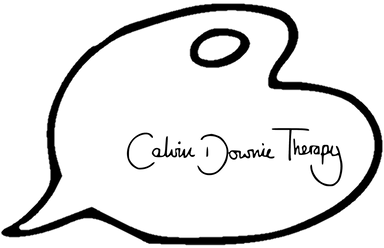What is Supervision?
Art Therapy (or Art Psychotherapy) is a form of psychotherapy which uses art making as the main mode of communication to provide support to people in distress exploring emotional difficulties. Within sessions, art isn't used as diagnostic tool but as a medium to address emotional issues which may be complex or confusing. And there is no need to be creatively skilled and previous art experience is not required; sessions aren't art lessons, instead they're based upon strong psychodynamic theory and therapeutic boundaries. Whilst establishing a therapeutic relationship together, the client may use materials such as; paint, pencils, pens, clay, sand, objects, toys or puppets. Art Therapy relies on a combination of elements including the process of art making, spoken words, and the safe and confidential environment. Sessions begin with an initial meeting to better understand your reasons for seeking therapy and to access whether art therapy is the best approach, rather than speaking therapy or a different alternative therapy. We will discuss art therapy options tailored to your individual needs and agree on how best to go forward. Some people only require support for a few weeks, whilst others may benefit from longer-term session plans. Sessions last 50 minutes tend to be once a week at a regular time and day- consistency in time and in therapy space is an important factor in therapy.
What Are The Benefits Of Attending Supervision?
Through using the art materials available with a trusted psychotherapist, research shows art therapy has been proven to help in reducing stress, managing behaviour, developing interpersonal relationships, increasing self-esteem and awareness and other factors relating to clients needs. For some people expressing raw and vulnerable feelings in any setting may feel intimidating or painful, but to work with expressive arts can allow allow the client and therapist can "look at" the art making process -rather than physically "looking at" you, the client- while allowing unconscious thought process to occur in a less invasive or exposing way for some clients. Some examples of benefits or incentaves clients take from art therapy may include a reduction in feelings of anxiety, improvements in interpersonal relationships with friends or family, or an increase in their self esteem. Focus and clarity of thought can improve, and impulsivity can reduce. A different perspective can leave you feeling calmer, relaxed and more grounded.
Why Do People Seek Art Therapy?
People are unique and so are the reasons they seek Art Therapy- and just as everyones reasons are unique, each session is completely individual and tailored to what the client requires. Usually people are in search of: relief, reassurance, a better understanding of uncomfortable feelings, thoughts or behaviours. The discomfort can be a response to a current situation, result from memories, or perhaps the root cause is unknown. These difficulties may become present as physical symptoms, affect relationships, school work, social occasions and work life. Life can feel out of balance.

